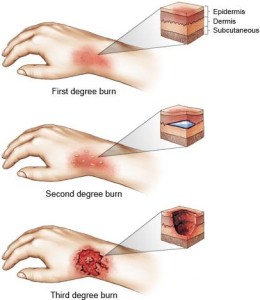

Accordingly, CitH3 and NE were elevated in. Third-degree burns damage or completely destroy both layers of skin including hair follicles and sweat glands and damage underlying tissues. There is no sensation in the area since the nerve endings are destroyed.īurns affecting 10 percent of a child's body and those affecting 15 to 20 percent of an adult's body are considered to be major injuries and require hospitalization and extensive rehabilitation. Though neutrophil-derived factors did not predict mortality, patients suffering from 3rd degree burn injuries displayed increased CitH3 and NE levels. Most second-degree burns and all suspected third-degree burns warrant a prompt trip to The Emergency Center. Third-degree burns may also damage the underlying bones, muscles, and tendons. However, if the burn covers a large area of the body (like a bad sunburn) or if it happens to someone at higher risk of complications, such as young children or the elderly, it’s best to seek emergency care. Third-degree burns destroy the epidermis and dermis. The burn site appears red, blistered, and may be swollen and painful. Second-degree burns involve the epidermis and part of the dermis layer of skin. Second-degree -(partial thickness) burns.This type of burn destroys the outer layer of skin (epidermis) and the entire layer beneath (or.

Long-term tissue damage is rare and usually consists of an increase or decrease in the skin color. A third-degree burn is referred to as a full-thickness burn. The burn site is red, painful, dry, and with no blisters. Burns are classified as first-, second-, or third-degree, depending on how deep and severe they penetrate the skin's surface.įirst-degree burns affect only the epidermis, or outer layer of skin.


 0 kommentar(er)
0 kommentar(er)
